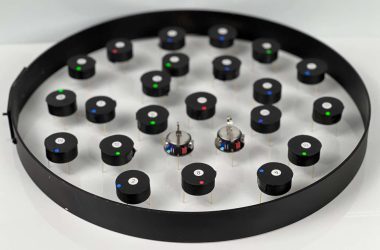The advancements in nuclear fusion research have recently shown promising results, with a successful breakthrough experiment achieving a net gain in energy. However, before we get carried away with the idea of unlimited clean energy, it is important to consider the challenges that still lie ahead.
What’s so great about fusion power?
Unlike current nuclear power plants that rely on fission reactions, fusion power works by combining smaller particles into larger atoms, similar to what happens in the sun. Fusion has the potential to generate more energy without producing radioactive waste. However, controlling and containing such a reaction has proven to be a major challenge for scientists and engineers.
What has been achieved so far?
In December 2022, researchers at the Lawrence Livermore National Laboratory (LLNL) in California achieved a significant milestone. Their fusion reactor, known as the National Ignition Facility (NIF), used lasers to create the necessary heat and pressure for fusion to occur. The reactor produced more energy than was put into it, with a 20% increase in output compared to the laser input. While these numbers are far from what is needed for a commercial reactor, it offered hope that fusion power could be a viable option.
According to a report in the Financial Times, the lab has now achieved a second ignition, surpassing the break-even point, with the reactor producing around 3.5 megajoules of energy. However, it is crucial to note that these achievements are still far from the level required for practical use.
Does this mean fusion power has been solved?
Not quite.
One challenge is the inefficiency of the lasers used in the reactor. The lasers require a massive amount of power, drawing more energy than the entire US national grid to produce just 2.1 megajoules of energy. So, it is essential to develop a reaction that breaks even in terms of total energy requirements, not just in the final laser stage.
Another challenge is the limited firing capability of the NIF reactor. It can only be fired once for a fraction of a second before needing several hours of cooling. A commercial reactor would need to operate continuously and have multiple ignitions per second.
Furthermore, even if a reactor can operate for extended periods and offset its energy requirements with the lasers, it would still only break even. To become a viable alternative to current power sources, fusion energy needs to provide a substantial net energy output that justifies the high construction costs.
What do experts say about the achievements?
According to Jeremy Chittenden at Imperial College London, the real milestone was the 2021 experiment where the LLNL reactor showed the ability to work regardless of the output. The recent advancements are an amplification of that achievement, with longer periods of controlled reactions and increased energy extraction. Currently, only a small percentage of the fuel is burned in LLNL’s experiments, indicating room for further improvements.
Will fusion power be a reality in the future?
While it is impossible to predict with certainty, there is more reason for optimism now than ever before. The successful ignition milestones demonstrate that the science behind fusion is sound, shifting the focus to engineering challenges rather than fundamental physics.
Various research approaches, such as using magnetic fields or lasers, are being pursued to achieve viable fusion. The NIF reactor uses lasers in a method called inertial confinement fusion, where lasers heat and expand a hydrogen fuel capsule. Additionally, numerous startups are exploring alternative designs that could potentially overcome current limitations.
Despite the potential for efficiency improvements in the LLNL reactor, fundamental changes will be necessary to make it commercially viable. Chittenden points out that the reactor’s indirect approach using lasers to generate X-rays requires heating a larger amount of material compared to the direct heating of the fuel with lasers.
In conclusion, while fusion power remains many years away from practical implementation, it cannot be relied upon as a solution to the immediate climate change crisis. Renewable energy sources will have to play a significant role in the short and medium term in providing clean and abundant energy.
Topics:








